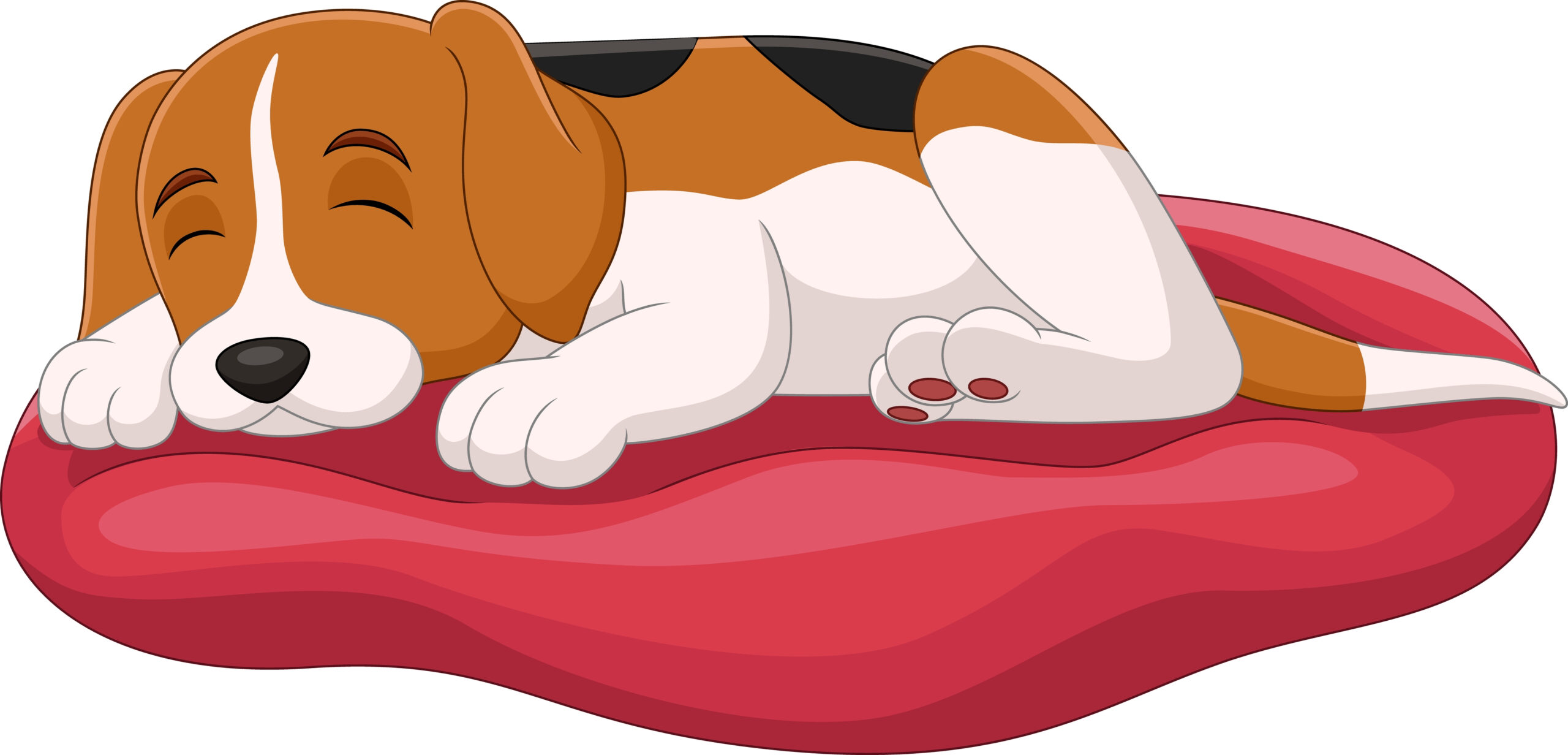Why Exercise Calms Nervous Dogs: A Tail-Wagging Solution for Anxious Pups
Exercise can be a game-changer for nervous dogs. It’s not just about burning energy – it’s a powerful tool to help your furry friend feel more relaxed and confident.
Regular physical activity can lower stress hormones in dogs, leading to a calmer and happier pet.
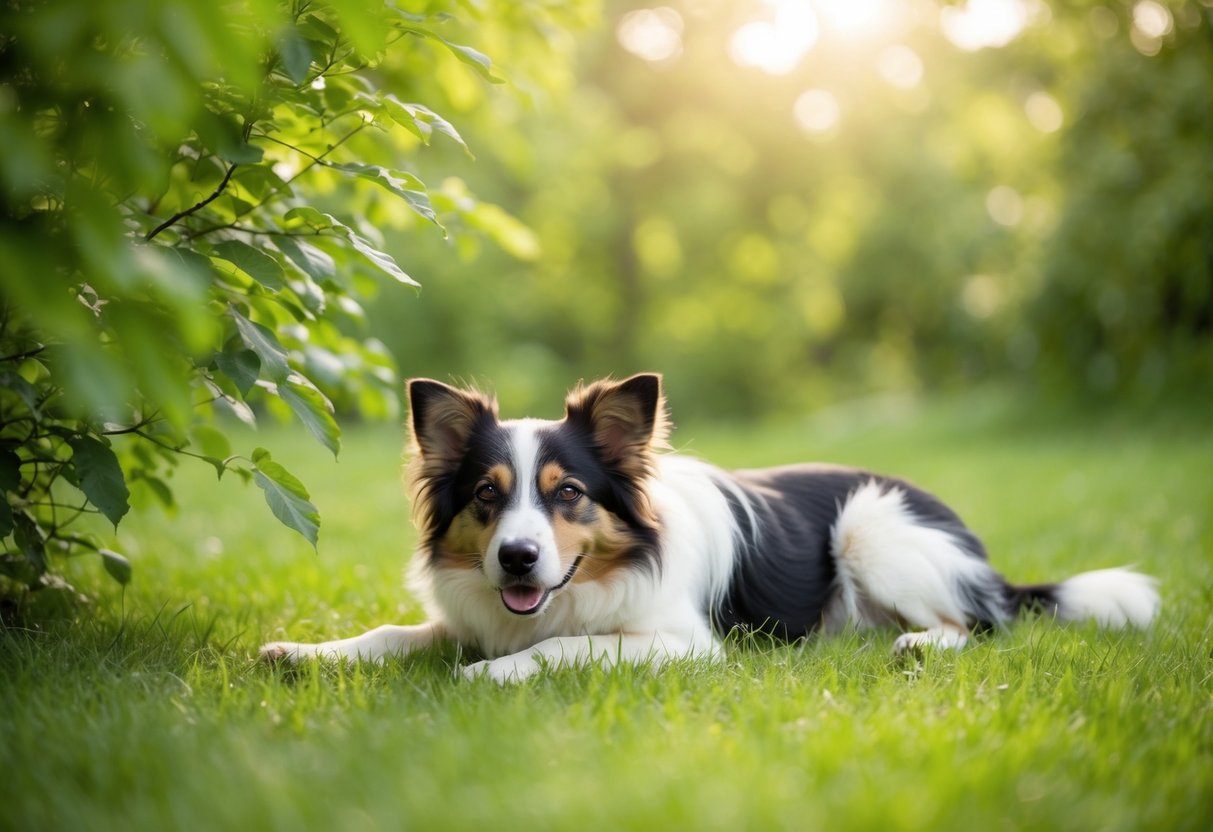
When dogs exercise, their bodies release feel-good chemicals called endorphins. These natural mood boosters help reduce anxiety and promote a sense of well-being.
Plus, a tired dog is often a less anxious dog. After a good workout, your pup may be too tuckered out to worry about the things that usually make them nervous.
Exercise can also help with dog anxiety by providing mental stimulation.
Activities like fetch, agility courses, or even simple hide-and-seek games can keep your dog’s mind occupied and focused on something positive. This mental engagement can be just as important as physical exercise in managing anxiety.
Key Takeaways
- Regular exercise reduces stress hormones and boosts mood in dogs
- Physical activity tires out nervous dogs, making them less likely to feel anxious
- Mental stimulation through play and training helps keep dogs calm and focused
The Science of Stress in Dogs
When your dog feels stressed, their body goes through some big changes. Their heart beats faster and they breathe more quickly. You might see them pant or shake.
Dogs can get stressed for many reasons. Loud noises, new places, or being left alone can all make them feel nervous. Some dogs even get stressed when they meet new people or other dogs.
Sniffing can help calm dogs down. It releases a feel-good chemical in their brain called dopamine. This chemical helps them feel more relaxed.
Exercise is another great way to help your dog feel less stressed.
When dogs move their bodies, it can:
- Lower stress hormones
- Boost happy chemicals in the brain
- Tire them out, which can lead to better sleep
Look for these signs that your dog might be feeling stressed:
- Dilated pupils
- Excessive drooling
- Tucked tail
- Uncontrolled peeing or pooping
- Barking or whining more than usual
By knowing these signs, you can help your dog before their stress gets worse. Remember, every dog is different. Pay attention to what makes your furry friend feel calm and happy.
Understanding Dog Exercise Needs
Dogs need different amounts of exercise. Some need lots, while others are happy with less. It depends on their breed and age.
Breed-Specific Exercise Requirements
Different dog breeds have unique exercise needs. Working and sporting dogs like Border Collies and Labrador Retrievers need more activity. They enjoy long walks, runs, and fetch games.
Smaller breeds like Chihuahuas or Shih Tzus need less exercise. Short walks and indoor play can be enough for them.
Brachycephalic breeds (flat-faced dogs) like Pugs may struggle with intense exercise. They need gentle activities to avoid breathing problems.
The Role of Age and Health in Activity Levels
Your dog’s age and health affect how much exercise they need. Puppies have lots of energy but shouldn’t over-exercise as their bones are still growing.
Adult dogs are at their peak fitness. They can handle longer walks and more intense play.
Senior dogs may slow down. They still need exercise, but gentler activities like swimming can be better for their joints.
Dogs with health issues might need adjusted exercise plans. Always check with your vet if you’re unsure about your dog’s exercise needs.
Benefits of Exercise for Nervous Dogs
Exercise can help calm nervous dogs in many ways. It improves their physical health, mental state, and behavior. Let’s look at the key benefits.
Physical Health Advantages
Regular exercise keeps your dog’s body in good shape. It helps maintain a healthy weight and builds strong muscles.
Exercise reduces stress levels in dogs, just like in humans. This can lower their overall anxiety.
Physical activity also tires out your dog. A tired dog is often a calmer dog. They have less pent-up energy to fuel their nervousness.
Exercise can improve your dog’s sleep quality too. Better sleep means your pet will be more relaxed during the day.
Mental and Emotional Improvements
Exercise gives your dog’s brain a workout. This mental stimulation is crucial for nervous dogs. It helps them focus on something other than their fears.
Regular physical activity releases feel-good chemicals in your dog’s brain. These chemicals, like endorphins, can boost your pet’s mood and reduce anxiety.
Exercise also builds confidence. As your dog masters new skills or completes tasks, they feel more self-assured. This confidence can help them face their fears better.
Behavioral Changes Observed
Many dog owners notice positive changes in their pets after starting a regular exercise routine. Nervous dogs often become more relaxed and less reactive to triggers.
Exercise can help redirect a dog’s focus away from stressors. This makes it easier to train them and manage their anxiety.
You might see fewer destructive behaviors at home. A well-exercised dog is less likely to chew furniture or bark excessively out of boredom or anxiety.
Exercise can also improve your dog’s social skills. Regular walks or trips to the dog park can help them feel more comfortable around other people and dogs.
Types of Exercise to Calm Nervous Dogs
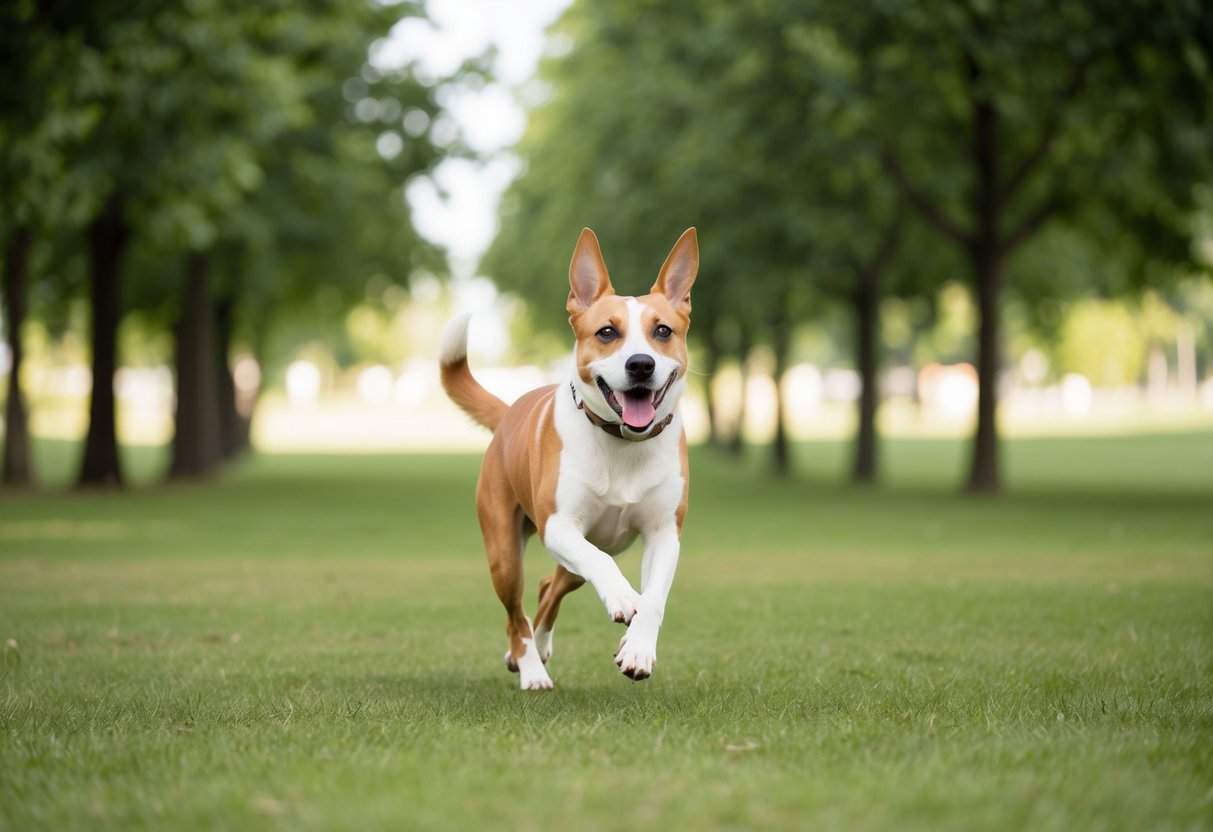
Exercise can help calm nervous dogs by releasing pent-up energy and stress. Different types of activities can address both physical and mental needs, helping your dog feel more relaxed and balanced.
Structured Physical Activities
Long walks are a great way to start your dog’s exercise routine. Aim for at least 30 minutes twice a day. This helps burn energy and reduces anxiety.
Jogging with your dog can be even more effective. The steady rhythm can be soothing for anxious pups.
Swimming is another excellent option. It’s low-impact and provides a full-body workout. Many dogs find water calming.
Agility courses offer both physical and mental stimulation. Set up simple obstacles in your backyard using household items. Guide your dog through jumps, tunnels, and weave poles.
Remember to start slow and build up intensity over time. Always watch for signs of fatigue in your nervous dog.
Mental Stimulation Games
Hide-and-seek games are fun and engaging. Hide treats or toys around the house or yard. Let your dog use their nose to find them.
Puzzle toys can keep your dog’s mind busy. Fill a Kong toy with treats or peanut butter. Freezing it makes the challenge last longer.
Teach your dog new tricks. This mental exercise can boost confidence and reduce anxiety. Start with simple commands and work up to more complex ones.
Scent work is a great way to tire out your dog’s brain. Hide a scented item and encourage your dog to find it. This taps into their natural instincts.
Obedience training sessions can also be calming. Short, positive training periods help reinforce good behavior and provide mental stimulation.
Interactive Playtime
Tug-of-war is a classic game many dogs love. Use a rope toy and let your dog pull. This helps release tension and energy.
Fetch is another great option. Throw a ball or frisbee for your dog to retrieve. This combines running with the joy of bringing something back to you.
Gentle wrestling can be fun for some dogs. Use your hands to playfully engage with your pup. Always be gentle and stop if your dog seems uncomfortable.
Chasing bubbles is a light-hearted activity. Many dogs enjoy jumping and snapping at floating bubbles. It’s a good way to get them moving without too much intensity.
Remember to always supervise playtime. Watch for signs of stress or overstimulation in your nervous dog. End the session on a positive note before your dog gets too tired.
Creating a Calming Exercise Routine
A well-planned exercise routine can help soothe your nervous dog. By combining different activities and sticking to a schedule, you can create a calming effect through physical activity.
Establishing a Consistent Schedule
Set up a daily exercise routine for your dog. Try to exercise at the same times each day. This helps your dog know what to expect. A regular schedule can reduce anxiety in dogs.
Start with short sessions and slowly increase the time. For example:
- Morning: 15-minute walk
- Afternoon: 10-minute play session
- Evening: 20-minute walk or jog
Be patient and stick to the routine. Your dog will soon look forward to these activities.
Combining Different Types of Exercise
Mix up the types of exercise to keep your dog engaged. This helps tire them out both mentally and physically. Some options include:
- Walks or jogs
- Fetch games
- Tug-of-war
- Agility courses
- Swimming
Calm games that engage your dog’s brain can be very helpful. Try hide-and-seek with treats or puzzle toys. These activities can distract your dog from anxiety triggers.
Adjusting Activities to Your Dog’s Preferences
Pay attention to what your dog enjoys most. Some dogs love to run, while others prefer gentler activities. Watch your dog’s body language during different exercises.
If your dog seems stressed by certain activities, try something else. For example, if busy parks make your dog nervous, find a quieter area for walks. You can also try playing calming music during exercise to create a soothing atmosphere.
Remember to praise your dog and offer treats during exercise. This helps create positive associations with the activities. Over time, your dog will see exercise as a fun, calming part of their day.
Training Tips for Nervous Dogs During Exercise
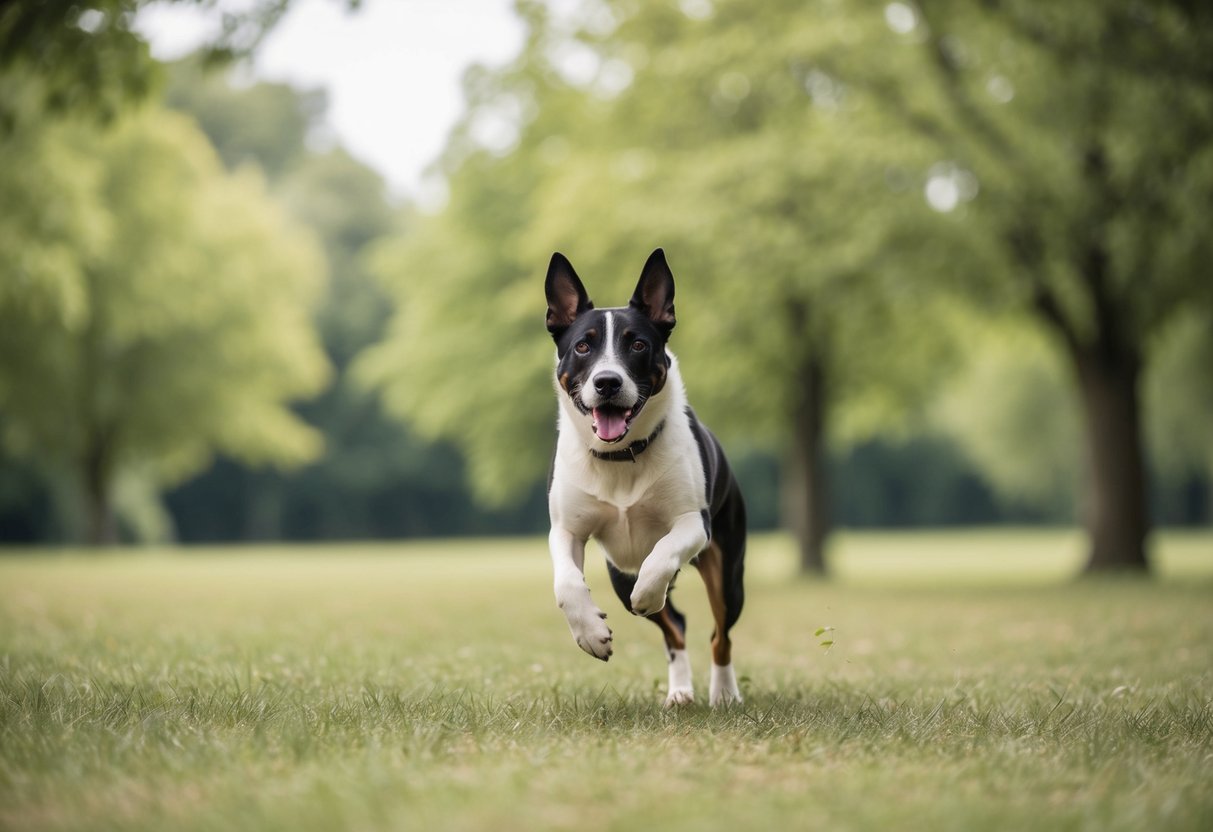
Start with short, easy workouts for your anxious pup. Keep sessions brief, around 5-10 minutes at first. This helps build confidence without overwhelming your dog.
Use positive reinforcement during exercise. Reward your dog with treats and praise for calm behavior. This helps redirect your dog’s focus and makes exercise a positive experience.
Try these simple tricks to calm your nervous dog during workouts:
- Touch: Teach your dog to touch your hand with their nose
- Spin: Have your dog turn in a circle
- Change direction: Suddenly walk the opposite way during walks
These actions can distract your dog from stressors and provide a sense of control.
Choose quiet locations for exercise at first. Gradually expose your dog to busier areas as they become more comfortable. This desensitization process helps reduce anxiety over time.
Consider using an anxiety vest during exercise. These snug-fitting garments can help some dogs feel more secure.
Be patient and consistent with your training. Progress may be slow, but stick with it. Your calm energy will help reassure your nervous pup during exercise.
Remember to watch for signs of stress in your dog. If they seem overwhelmed, take a break or end the session. It’s okay to go at your dog’s pace.
Recognizing Signs of Overexertion and Stress
When exercising your nervous dog, it’s important to watch for signs of overexertion and stress. These signals can help you know when to slow down or stop the activity.
Physical signs to look out for include:
- Excessive panting
- Drooling more than usual
- Stumbling or lack of coordination
- Muscle tremors or shaking
You might also notice behavioral changes. Your dog may:
- Refuse to continue moving
- Lie down and not want to get up
- Show signs of anxiety like yawning or licking their lips
- Become irritable or snap when touched
Pay attention to your dog’s energy levels. If they seem unusually tired or lethargic after exercise, it could be a sign of overexertion.
Remember, every dog is different. What’s too much for one might be fine for another. Learn your pet’s limits and adjust accordingly.
If you notice these signs, take a break. Offer your dog water and a chance to rest in a quiet, cool place. Pushing too hard can lead to injury or heightened anxiety.
Integrating Socialization in Exercise Regimens
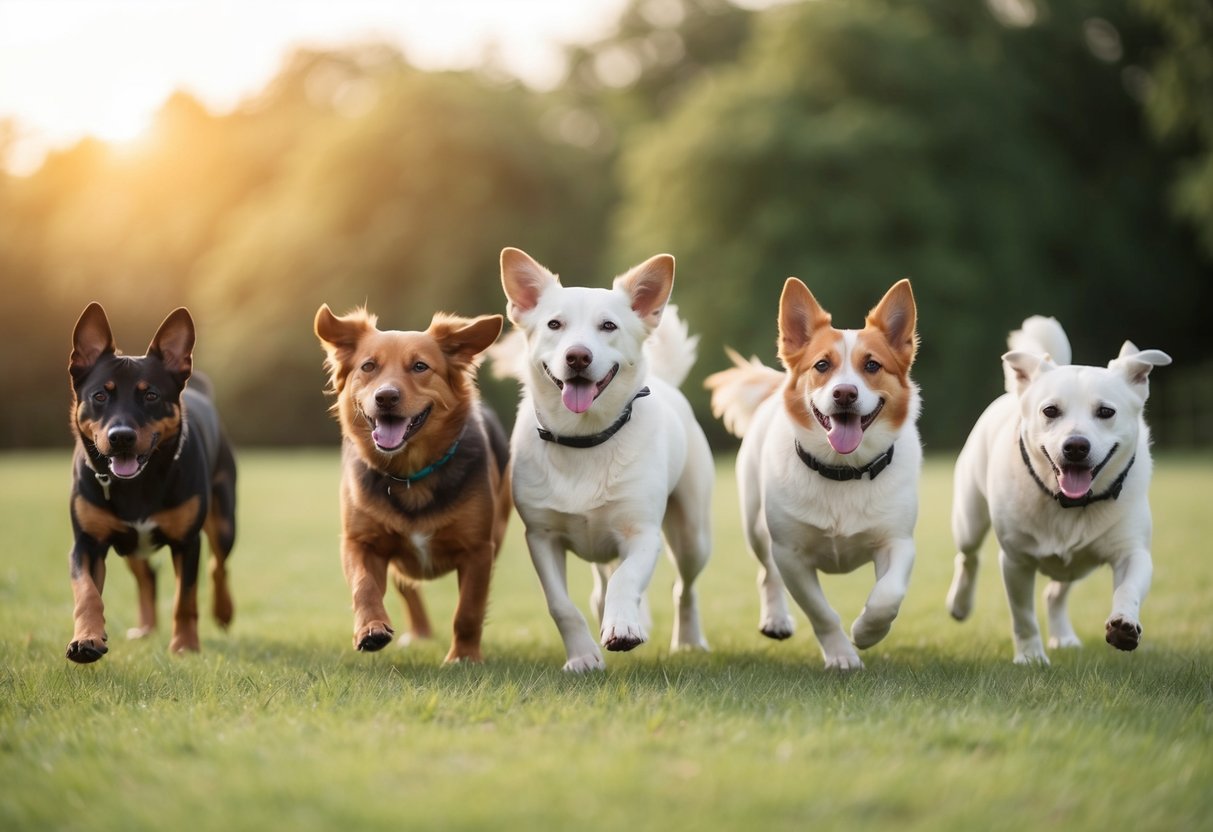
Exercise can be a great way to help your nervous dog feel calmer. By adding socialization to your dog’s workouts, you can boost the benefits even more.
Try taking your pup to a dog park. This lets them run and play with other dogs in a fun setting. Your dog can burn energy while learning to interact with others.
Group dog walks are another good option. You and your dog can join other pets and owners for a stroll. This gives your dog exercise and social time in a controlled environment.
Agility classes offer both physical and mental stimulation. Your dog will learn new skills while being around other dogs and people. This can help build their confidence.
Here are some ways to mix socialization and exercise:
- Doggy playdates with friendly pets
- Fetch at the park where other dogs play
- Jogging with a dog-owning friend
- Swimming at a dog-friendly beach
Remember to start slow. Let your nervous dog get used to new situations bit by bit. Praise them for calm behavior around others.
Regular exercise with social elements can help your dog feel more relaxed overall. It gives them a chance to burn energy and learn positive social skills at the same time.
Monitoring Progress and Making Adjustments

As you work to calm your nervous dog through exercise, it’s important to keep track of how things are going. Watch for changes in your dog’s behavior and mood over time.
Look for these positive signs:
- Less barking or whining
- Calmer reactions to triggers
- Better sleep at night
- More relaxed body language
Keep a simple log of your dog’s exercise and behavior. Write down what activities you do each day and how your dog responds. This will help you spot patterns.
If you don’t see improvements after a few weeks, try changing things up. You might need to:
- Increase exercise time
- Try new activities
- Adjust the time of day you exercise
- Add mental stimulation like puzzle toys
Remember, every dog is different. What works for one might not work for another. Be patient and keep trying new approaches until you find what helps your pup feel calm and happy.
Talk to your vet if you’re not seeing any progress. They can check for health issues and give more advice on calming your nervous dog.
Frequently Asked Questions
Exercise can really help calm nervous dogs. It burns energy and releases feel-good chemicals in their brains. Here are some common questions about using exercise to soothe anxious pups.
How can physical activity improve my dog’s anxiety?
Exercise tires out your dog’s body and mind. This leaves less energy for anxious behaviors. Physical contact during play can also comfort your pup. Petting and massaging release calming hormones.
What are effective ways to alleviate separation anxiety in dogs?
Try giving your dog a long walk before you leave. This tires them out so they’re more likely to rest while you’re gone. Leave puzzle toys to keep their mind busy. Playing calming music can also help.
What strategies work best to soothe a scared dog?
Calm games that engage your dog’s brain are great for soothing fears. Try hide-and-seek with treats. Ask your dog to “find it” after they see where you hide a treat. Praise them when they succeed.
Is there a connection between exercise and reduced anxiety in dogs?
Yes! Regular exercise lowers stress hormones in dogs’ bodies. It also boosts mood-lifting chemicals like serotonin. This helps dogs feel more relaxed overall, even when faced with stressful situations.
What type of exercise is most effective for calming a nervous dog?
Sniffing walks are very calming for dogs. Let your pup stop and smell things often. Sniffing lowers stress levels and makes dogs feel more optimistic. Swimming and fetch are also great for burning energy.
How can I help my dog relax and lower its heart rate?
Gentle petting and massage can slow your dog’s heart rate.
Speak in a soft, soothing voice.
Try deep pressure therapy by gently hugging your dog or using a thunder shirt.
Slow, calm breathing near your dog can help them match your relaxed state.
